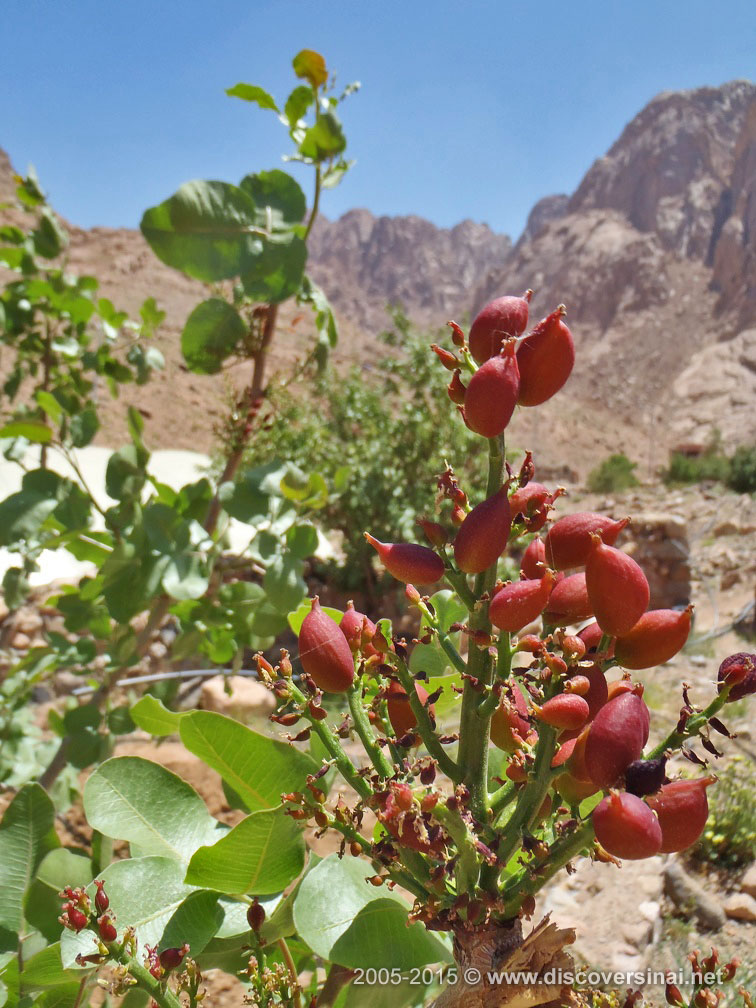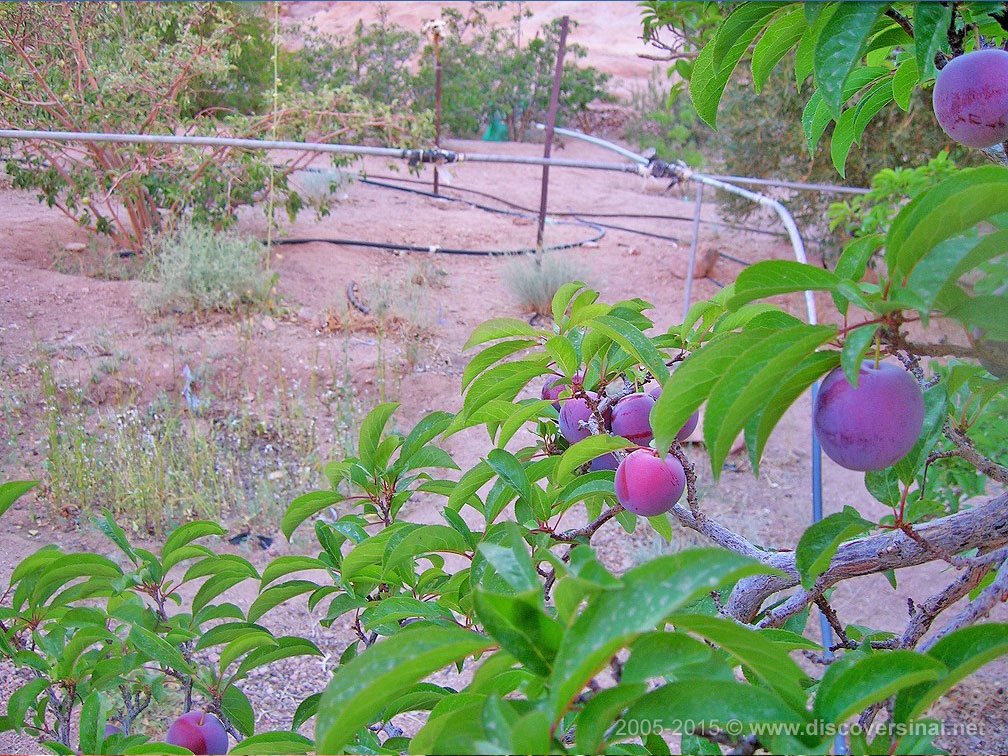From spring to late autumn, there is always some seasonal fruit in the Sinai mountains. Wetter and cooler than the rest of the desert, the wadis of the mountainous region around St Catherine hide over 500 ancient orchards. Many are abandoned today, but you can still find a lot of beautiful gardens that are cared for. The Bedouin of the mountains are expert gardeners who have been cultivating a wide range of fruit species for over a thousand years. They had to deal with the shortage of water, on one hand, as well as with the forceful flash floods that occasionally sweep through the valleys, on the other. So garden walls were built robust, to withstand the onslaught of water and to retain the soil. At the same time holes in the wall and channels were built to direct some of the water to wells and small reservoirs. Built from rocks of various sizes, some as big as a car, every ancient garden is a work of art. The gardeners are also masters of grafting, putting branches of better yielding fruit varieties on local, more drought resistant trees. In some instances up to three different fruit species were grafted on a single tree.
Almond trees are the first to flower, starting as early as January, but it is apricot that bears fruit first around the beginning of June. When a fruit is available depends on the elevation and also on the variety. In the village apple might be ready, but not yet further up in the mountains. Also some apple varieties, to stick with the example, ripen earlier, while others later. The last fruits are pomegranate and quince, as late as October or even November.
Fruit grown in the mountains:
- Almond – One of the main produce of the mountains, with surplus sold locally. Two types are known, a hard shelled variety, and one with a soft layered shell that is easy to break even with hands.
- Apple – Different varieties of apple are cultivated, that ripen at very different times.
- Apricot – The other main produce of the mountains, sold or dried on the sun. From the sun-dried apricot drink can be made in a blender, popular at Ramadan time.
- Carob – Not a too common species, with one well-known tree found in Wadi Itlah. Locally tea is made from the ripe carob fruit pods.
- Citrus – Only found in lower wadis, even there it is not too common.
- Dates – Absent from the high mountains, dates only grow in the lower wadis and more commonly in the oases in the desert.
- Fig – Figs are grown in gardens but can also be found in many places in the wild, with the branches of a better yielding variety grafted on the common local wild variety.
- Grapes – A popular fruit grown in gardens near water sources. The vines often grown over the frame of an arisha to provide shade.
- Olives – A very common tree in the whole Mediterranean region, olives are also grown in the mountains. The Monastery has big olive groves in some of the wadis.
- Peach – Not grown in big quantities, peach nevertheless is often found in gardens.
- Pear – Different types of pear are grown, mostly the late variety known as shitwee.
- Pistachio – Only found in a few gardens, although conditions are good for growing pistachios.
- Plum – Found in a few gardens, but plum is not a main produce.
- Pomegranate – Very common fruit, found in most gardens.
- Quince – Used for making jam and for its strong, pleasant scent, quince is grown in many gardens.
- Walnut – Only a few trees grow in the mountains, all planted in the wild, they probably don’t produce edible nuts.














